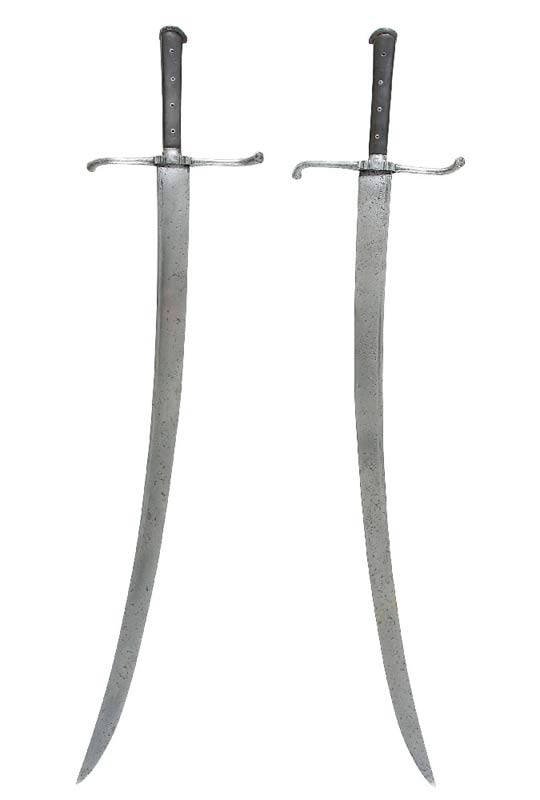I am working on a messer (pics below), and had a total and complete brain fart (probably too much carbon monoxide -- was forge welding wrought iron this morning!). I forge welded on the messer's pommel (which i've read was a historically correct method of messer pommel attachment), BEFORE i put on the hilt!!
Messer blade:
1.25" x 0.25" - 1084
Pommel:
Laminated 0.25" strips of wrought iron
Hilt:
Laminated 0.25" strips of wrought iron
I had to forge weld together several pieces of my wrought iron, to get thick enough pieces for the hilt & pommel.
Anyhow, this morning i forge welded the pieces for the hilt, and did a rough forging pass on it (mostly to consolidate the wrought, and ensure the welds stuck). Then, i was going to forge weld each slab of the pommel, however, i took it a step too far and ended up forge welding the slabs onto the blade's tang! Gah! as soon as i stuck the welds, i realized what i had just done...
These are my options as i see it:
-Simply grind off my welded on pommel (which i am proud of, by the way...first successful wrought iron to carbon steel weld!) and start over.
or
-Cut, drill, and chisel out a slot in the hilt which the tang/blade will fit into, cut and fit a slab of wrought to fit over this and sandwich the tang/blade, then use the nagel to peen the hilt, tang, and slab together (essentially making the hilt a cross between a bolster and a crosshilt?). If this isn't clear what i mean, i can draw up a quick illustration...
How were messer hilted historically? I have read (can't recall where) that the pommel was often forge welded on...if so, how was the guard attached?
Thanks for any advice,
Dustin
Where to go from here?
The messer is roughed out, with some very preliminary profile grinding. [ Download ]
I'm closely following my Albion Soldat for my first messer: [ Download ]
closeup of hilt [ Download ]


